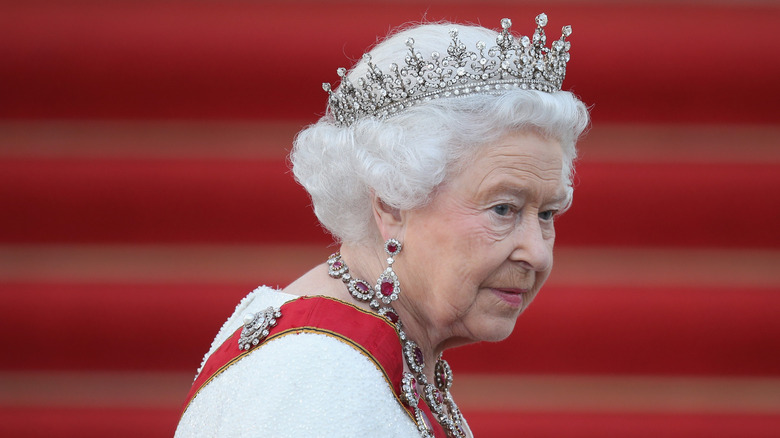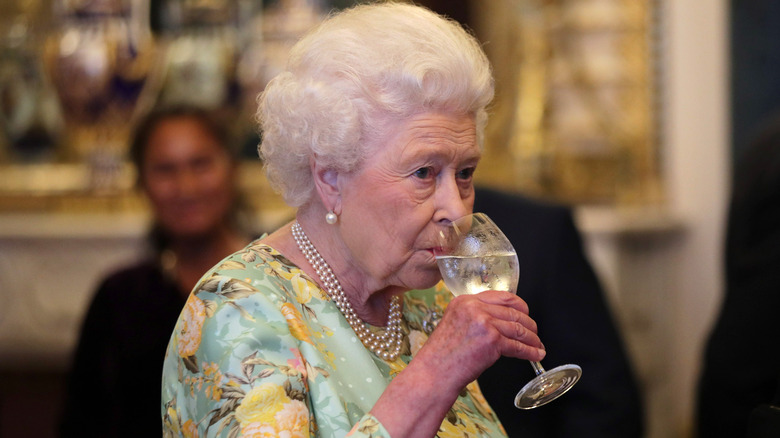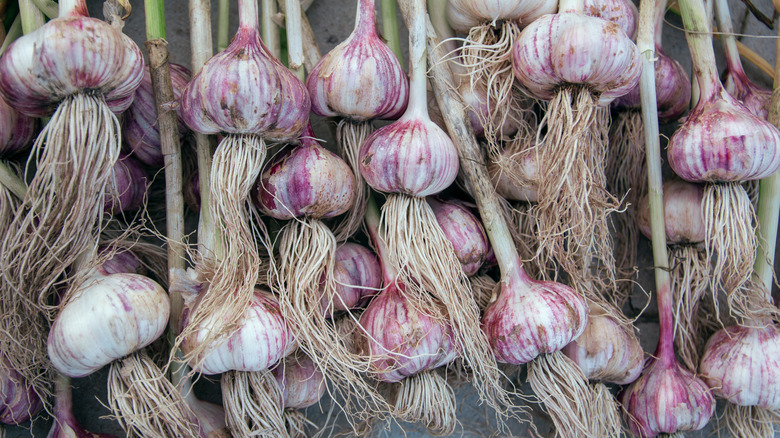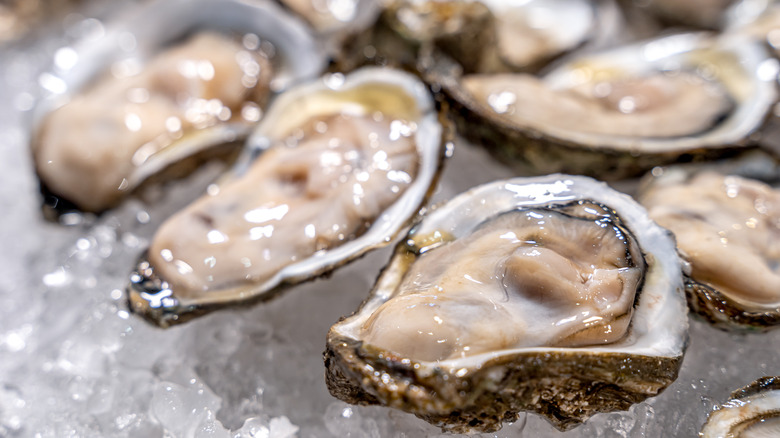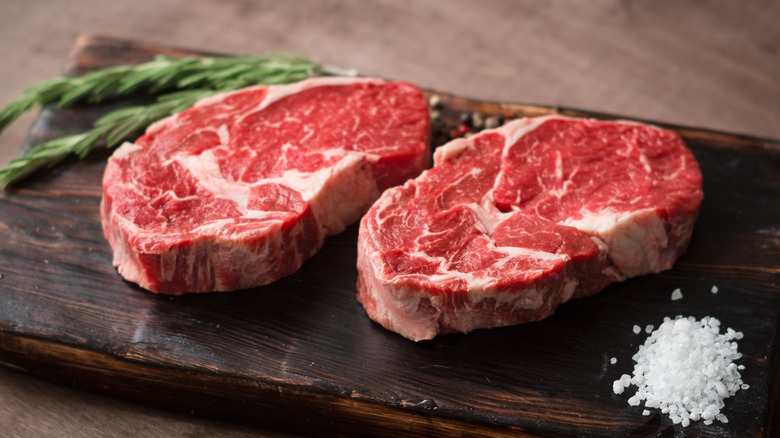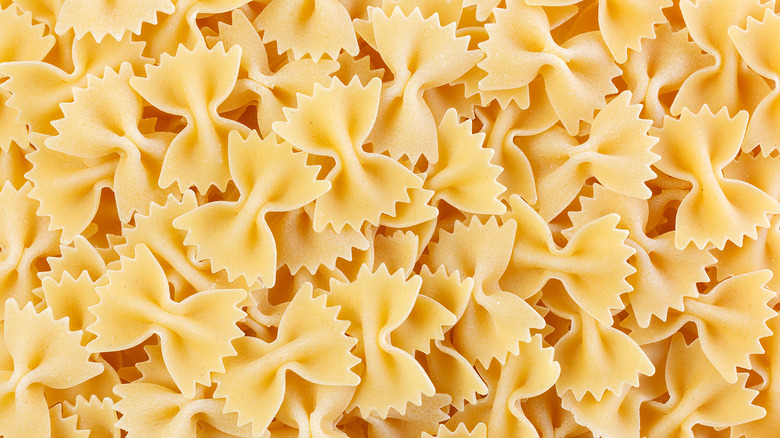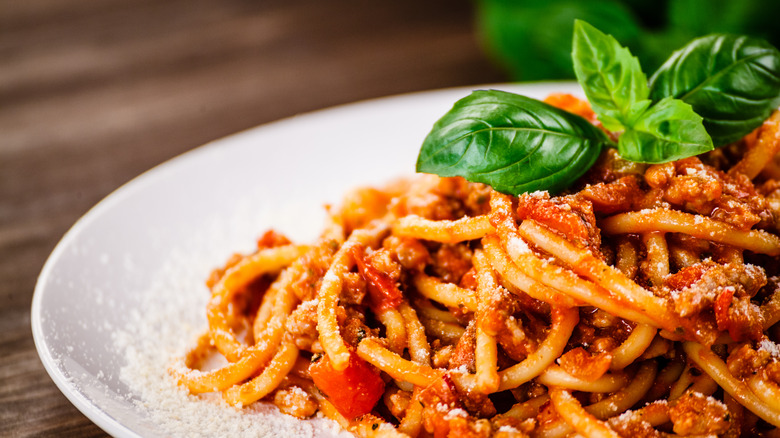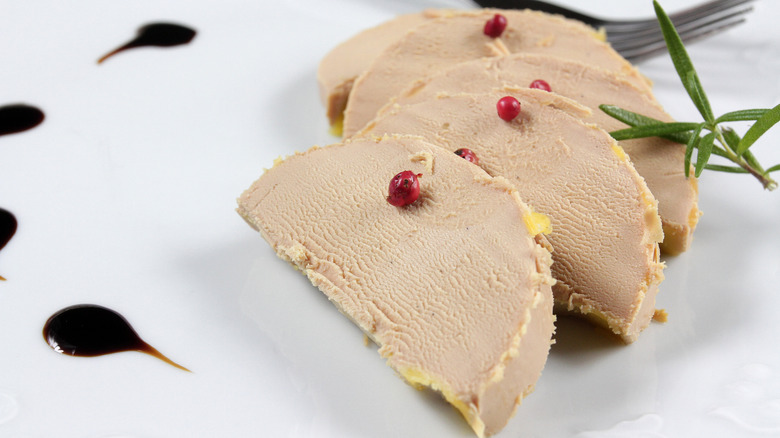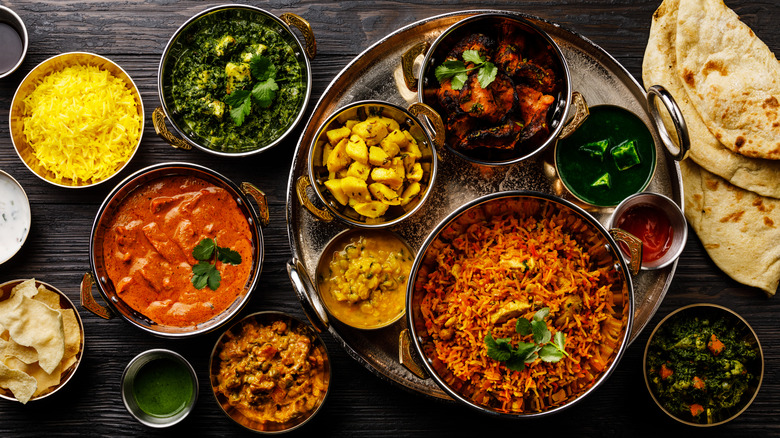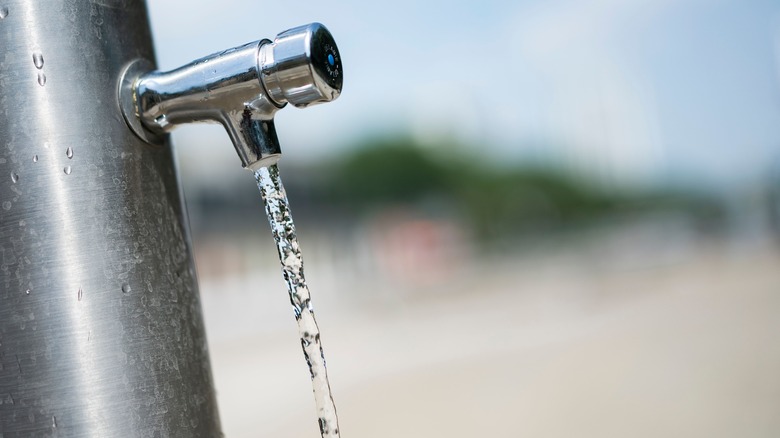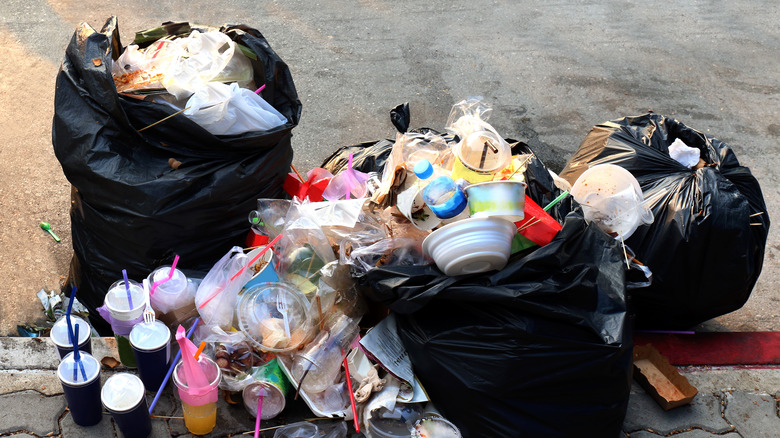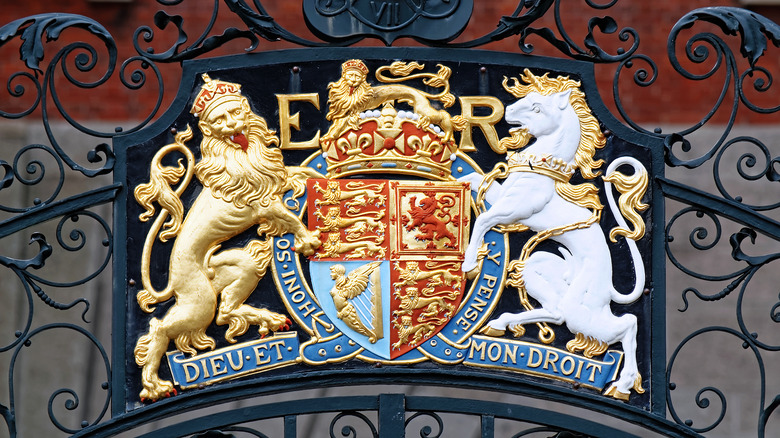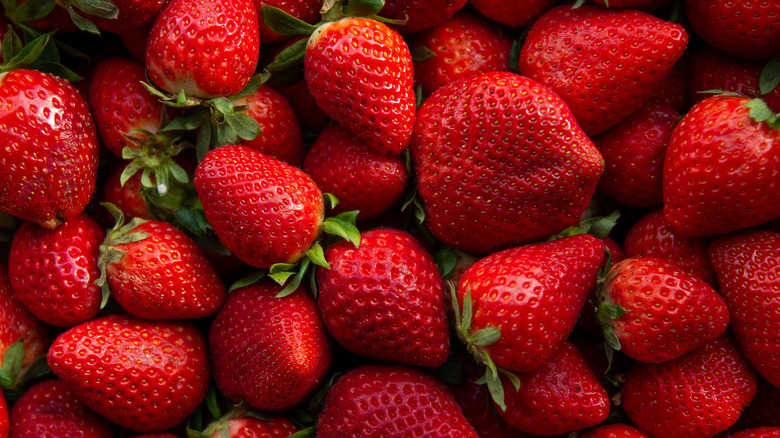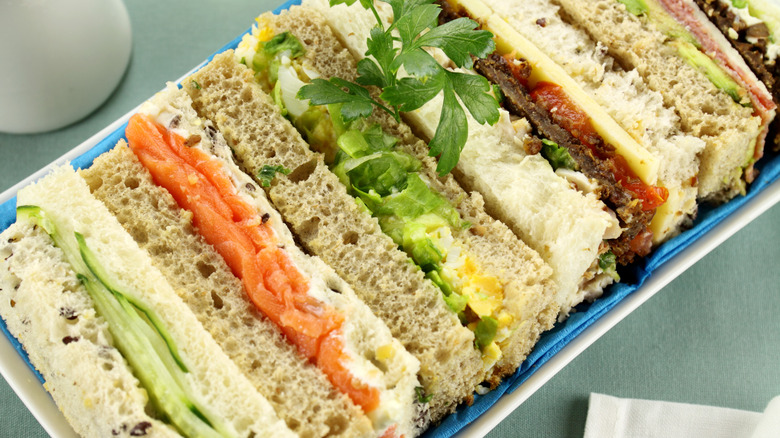Foods That The Queen Forbade The Royal Family From Eating
We may receive a commission on purchases made from links.
There's something to be said for living like a king or a queen. You've got your many palaces, your killer outfits (greenscreen or otherwise) — oh, and then there's all the swans that come with the job. Who wouldn't want to live a life like that? Well, that was the reality for the U.K.'s Queen Elizabeth, and it remains the reality for her children, her grandchildren, and her great-grandchildren. All royals have it good, of course, but these people obviously have it best.
Life as a royal isn't as food-glamorous as you might think
It's not all sunshine and roses, though. Life as a royal is a life of duty, and aside from the endless foreign tours, charity events, grand openings, and meet-and-greets, the royals are also forced to follow a number of very strict and sometimes very strange rules. And that goes for what they eat and drink, too. We're a long way away from the heady days of gluttonous royal feasts and ever-fattening kings, and before her death, the queen enforced a number of strict regulations regarding how her family ate. These are the foods that the royal family was forbidden from eating. Some of them are sure to surprise you.
The royal family was told to stay away from garlic and onions
It's the basis of all great cooking. It's the perfect way to spruce up any dish. It's the reason your house isn't overrun with vampires right now. Yes, that's right: it's garlic.
Unfortunately, the many joys of garlic remained thoroughly out of reach for the British royal family during Queen Elizabeth's reign. During an appearance on MasterChef Australia (via Glamour), Queen Consort Camilla Parker Bowles, wife to King Charles, revealed that "garlic is a no-no," and explained that the royals were told to "lay off the garlic" since they are so often required to converse with other dignitaries and members of the public.
Former royal chef Darren McGrady backed this up in 2016, when he told RecipesPlus that palace chefs were asked to refrain from serving anything with garlic. Meanwhile, another former royal chef told the National Post in 2016 that "they're missing out on garlic, because at Buckingham Palace, you don't cook with garlic. I suppose, in case you get the 'royal burp.'"
During his RecipesPlus interview, Darren McGrady also revealed that royal chefs were forbidden from using "too many onions" in their dishes. Considering onions form the basis of pretty much every decent recipe out there, the royals must have been thankful that they were allowed at least some leeway on that one — but honestly, we'd draw the line at garlic. Who could live without that?
Royals don't eat shellfish when dining out or abroad
The world of shellfish is an exciting one indeed: the term can refer to any one of a range of delicious and fascinating fish that are served all around the world — from shrimp to oysters to crab to lobster to clams, scallops, crayfish, mussels, and more. But while these kinds of shellfish are all very different in taste and texture, they do share one thing in common... they've been a no-go for the royals.
According to the BBC (via The Independent), the royals have made concerted efforts to avoid eating shellfish while dining out or visiting foreign countries, since it can carry a greater-than-normal risk of causing infection and illness. And that's putting it lightly. For example, mollusks (that's clams, scallops, oysters, and mussels) accounted for 45 percent of all seafood-related cases of foodborne illness between 1973 and 2006. Bacteria, viruses, or parasites picked up by shellfish can easily cause food poisoning, especially when eaten raw or improperly cooked, while pathogens can flourish in shellfish that haven't been correctly chilled — and it's pretty safe to say the queen didn't take chances that all chefs around the world know the correct way to store and serve these finicky foods.
For these reasons, Healthline even recommends that pregnant and breastfeeding women, older adults, and people with compromised immune systems should stay away from raw shellfish altogether.
And so should the royals, apparently.
Rare meats are a no-go for the royals
One thing the queen loved was steak — in particular, Gaelic steak. In a video for Delish, former royal chef Darren McGrady demonstrated one of the queen's favorite recipes. Although he used beef tenderloin, the queen herself usually preferred venison. The steak is seasoned with salt and pepper, before being cooked in butter and oil. The Gaelic sauce is then made with sautéed onions (uh-oh) and mushrooms, flambéed Irish whiskey and cream. But what's most notable here is the way she had her steak cooked: well done. "Chefs," McGrady explained, "we cook medium rare all the time. So it was really, really important that we got a really good sear on the steaks and cooked her steak well done."
But this likely goes beyond just personal preference, because rare meat is reportedly off-limits to royals during their travels. This is most likely because eating rare meat carries many risks. Undercooked meat can be a breeding ground for E. coli, which can cause diarrhea, vomiting, and stomach cramps. Salmonella is also a potential problem, which can instigate severe food poisoning. Undercooked meat, poultry, and seafood can also cause listeria, which causes diarrhea, nausea, fever, and muscle aches. And that's before you even touch on parasites, many of which can cause severe infections. And although eating rare meat is certainly no guarantee of infection, it seems that royals just aren't willing to take the risk — especially when they've got their duties to attend to.
Potatoes, pasta, and rice are only for special occasions
Considering Meghan Markle's favorite home-cooked recipe is zucchini bolognese, she might be counting her lucky stars that she and Harry have absconded from their royal duties — since pasta (and other starchy foods) are off the menu for "working" royals.
According to Darren McGrady, the queen often avoided eating starchy foods such as potatoes, pasta, and rice, with the only exceptions being made on very special occasions. Although this rule likely doesn't apply to other royals when they're off doing their own thing, meals at Buckingham Palace (or wherever the queen was staying) were a different story entirely. It's likely that the queen's aversion to starchy foods came as a result of their high carb content — which, some have argued, can have an effect on people's health. And the queen wasn't the only world leader to worry about this; in 2015, Pope Francis was told to lay off the pasta after he had begun to gain weight.
Of course, Markle has other plans. "When I'm traveling, I won't miss an opportunity to try great pasta," Markle once told Delish. "I come back from vacation every year with a food baby, and I've named her Comida. I get to the set [of Suits] and I'm like, 'Hey, Comida's here, and she's kicking.'"
There must be plenty of pasta meals being made at Markle and Prince Harry's California home, then.
Tomato sauce was too messy for the queen
Even if Queen Elizabeth did relent on her "no starch" rule and decide to serve up a pasta dish at a Buckingham Palace feast, you can be damn sure she never would have had it served with a marinara sauce. That's because, according to the BBC, the royals prefer to avoid "messy" tomato sauces. This revelation came in advance of the queen and Prince Philip's visit to Rome and Milan in 2000. Chefs at the palace of the Italian president were told that, as well as garlic and pasta, tomato sauces would not be permitted on the menu. Which, one imagines, isn't exactly what an Italian chef likes to hear.
You can kind of see the logic here. If you're all dressed up for a banquet where you'll be the focus of attention — to both guests and the media — you're not going to want to take any risks with spillages. And since the queen probably didn't fancy wearing a red dress every time she ate, it's safe to say that the easiest thing to do would be to just ban messy sauces altogether. Great news for the integrity of the British monarchy; not so great for lovers of spag bol.
Foie gras is banned from royal menus
Foie gras is one of the most controversial foods out there. The main problem with this expensive, high-class kind of pâté is that producers exercise a shockingly degree of cruelty in the production process. In order to make foie gras, farmers force-feed ducks and geese with corn via a tube inserted into their throats — causing their livers to swell up to 10 times their original size. The animals are kept in appalling conditions.
So maybe it's no surprise that, in 2008, the famously environmentally-conscious King Charles, then a prince, banned it from the royal menu. According to Andrew Farquharson, deputy master of the household at Charles' home Clarence House, Charles' chefs had been instructed not to purchase foie gras. Furthermore, Charles was reported to be considering withdrawing the royal warrant from his favorite cheese shop because they sold foie gras. Most U.K. retailers opt not to sell foie gras, and production of the foodstuff is banned in the country. France, however, exports very large quantities of it.
Commonly regarded as both extravagant and exceptionally cruel, the king's ban on foie gras was welcomed by animal rights groups. Justin Kerswell, of the campaign group Viva!, said: "We are very pleased, but foie gras should have been banned a long time ago. There is a groundswell of opinion against the inhumane food. Foie gras is seen as very posh and the heir to the throne is probably the poshest person in Britain, so for him to ban it is very good news."
Spicy or exotic foods aren't served to royals
One of the main benefits of being a royal is that you get to travel the world. As part of their duties, the royals often make visits to other countries, and Queen Elizabeth alone made state visits to all kinds of places — including France, Russia, Italy, Brazil, Thailand, the United States, Japan, Nepal, Ethiopia, and many, many more. So you'd imagine that royals are fairly well-versed in international gastronomy; especially since state visits usually mean state banquets. Unfortunately, some of these countries' more exotic dishes are very much off the menu.
In 2000, the BBC revealed that the royal entourage is banned from eating "any food that is too spicy or exotic." But why? Well, it's easy to imagine that this might come down to image. It wouldn't look too great if the a royal sits down at a state banquet, takes a bite of Phaal curry, and immediately begins to literally melt down in front of the world's dignitaries. Equally, nobody's going to look too kindly on a royal reluctantly trying some strange, exotic dish, realizing they hate it, and grimacing painfully as they swallow it down. Or worse, end up gagging or spitting it out. Not to mention, spicy foods have been known to cause a bit of stomach upset — especially to those who aren't used to them. Why take the risk?
It's not all bad, though, as sometimes the royals are permitted to push the culinary envelope a little. During a 1986 visit to China, for example, the queen was served a dish of slimy sea cucumber. So there's that.
Royals can't drink tap water
They say you shouldn't drink the tap water when you travel abroad, and it seems that the royals have taken that old adage to heart — since they're told to avoid drinking tap water so as to avoid any "potential hazards."
It's true that, in certain countries, tap water can prove very dangerous indeed. The NHS recommends that visitors to countries with poor sanitation "use filtered, bottled, boiled or chemically treated water" rather than water from the tap. Contaminated water can contain bacteria and parasites from human or animal fecal matter, dangerous minerals such as lead or mercury, as well as chemicals from industrial waste. These can pose a particular risk to people with compromised immune systems. Some of the potential side-effects of drinking contaminated water include gastrointestinal disease (which can range from mild to fatal), kidney problems, and long-term issues with physical and mental development.
Naturally, then, the queen preferred to drink bottled water — and not just any old bottle of Evian, either; no, as with so many other foods and drinks, she usually enjoys one brand in particular. The queen and her household preferred to drink Hildon Natural Mineral Water, which comes from the Test Valley in the United Kingdom. According to their own website, Hildon's unique flavor "is praised for its delicate purity and avoidance of medicinal taste."
This stuff isn't cheap, though, and a 12-pack of 11-ounce bottles will set you back a staggering $60. Fancy.
The royal family doesn't waste food
Despite all these forbidden foods, life as a royal is still pretty lavish. After all, you're not going to be complaining about having your foie gras taken away when you're getting to eat all kinds of pheasant, fresh vegetables, chocolate, cakes, and sandwiches. But although they eat well, one thing the royals can't abide is waste.
According to former royal chef Carolyn Robb, King Charles is insistent that nothing goes to waste. "If there were leftovers," he told Racked, "they'd be used one way or another. If not for him, then rehashed and used for a meal the following day."
Even the meals themselves were modest. "We were always quite careful," Robb explains, "[as] he never wanted to have huge amounts of food on the plate. They were always very thrifty and economical. If we made roasted lamb and there was leftovers, we'd probably go and make Shepard's pie the next night."
The queen was no different. In an interview with Hello! (via MSN), Darren McGrady recalled her own propensity towards thriftiness. "One time at the palace," he said, "the Queen was going to the theatre, and she requested a snack. She wanted smoked salmon and scrambled eggs, and he [the server] sent half a lemon, and did a really beautiful garnish on the lemon, and the Queen took a squeeze of the lemon and said, 'Would you send this lemon back to the kitchen? I'm sure it can be used for something else.'"
The royal warrants show us what the royals do eat
Of course, now you know just what the queen wouldn't abide, one question remains: what did she like? Luckily, it's easy to get a handle on what she ate and drank, thanks to the U.K.'s system of royal warrants. Royal warrants are, according to the Royal Warrant Holder's Association (via Food & Wine), a "mark of recognition of those who have supplied goods or services to the [royal family]." Essentially, they're queenie's favorite things. Any business or individual who holds a royal warrant is also permitted to emblazon their products with the Royal Arms — but to be eligible, they had to supply products or services to the queen, Prince Philip, or Prince Charles for no fewer than five years out of the last seven. They're also made to demonstrate that they "have an appropriate environmental and sustainability policy and action plan."
Some foods that hold the royal warrant include Bendricks, a brand of after-dinner mint chocolate; Cadbury, the British chocolatier now owned by Kraft; Heinz; Quaker Oats, a producer of cereals and porridges; Kellogg's; Paxton and Whitfield, the U.K.'s oldest cheese monger; and McIlhenny, who make Tabasco sauce.
Royal-approved drinks include Agnostura, producer of rum and bitter; Bacardi, producers of gin (the queen's favorite drink); scotch whisky makers John Walker & Sons; R. Twinning and Company, a tea producer; and even Schweppes.
But those are just a few examples — all in all, around 800 businesses and individuals hold royal warrants, with the list being updated monthly.
Out of season fruit was royally excluded from the menu
Darren McGrady served as royal chef to Her Majesty for 15 years in the 1980s and 1990s, and was very privy to the Queen's particular tastes, eating habits, and requirements. For example, McGrady said that she enjoyed strawberries very much, but only if the fruits were of a particular origin and picked at a certain time of year. "You can send strawberries every day to the Queen during summer at Balmoral and she'll never say a word," McGrady told "Today" (via Express), referring to Elizabeth II's hot-weather retreat in Scotland.
Strawberries are in season during the summer months, and thus at their peak of juiciness, flavor, and overall enjoyability. They don't grow naturally in the winter, but they are widely available thanks to modern farming techniques and science that the Queen didn't necessarily trust. "Try including strawberries on the menu in January and she'll scrub out the line and say 'don't dare send me genetically modified strawberries.'" The Queen required — and received — only organically-grown strawberries.
The Queen insisted that sandwiches be served without crusts
According to Queen Elizabeth II's former chef, Darren McGrady, Her Majesty typically ate four small meals a day, including the traditional British afternoon tea. That spread almost always includes simple and thin finger sandwiches, which the Queen enjoyed, provided that they'd been cut and presented in a certain way. Another royal chef, Owen Hodgson, told The Telegraph that he was once reprimanded by a superior for serving the chief royal sandwiches with the crusts still on. Her tiny sandwich preferences included tuna, prepared with mayonnaise, thinly sliced cucumber, and pepper, and "jam pennies," made up of round (and crustless) white bread pieces with a thin layer of strawberry jam in between, notes Express.
Serving the sovereign sandwiches with all the brown outer bits removed and in circular and narrow rectangular shapes may originate in an older royal family culinary dictum. "The royals never have square sandwiches because tradition has it that anyone presenting them with pointed-edged food is trying to overthrow the throne of England," former royal chef Graham Newbould said in the documentary "Secrets of the Royal Kitchen." Prince Albert, husband to Queen Victoria in the late 1800s, also forbade the serving of food shaped like coffins because he found it to be unlucky.
